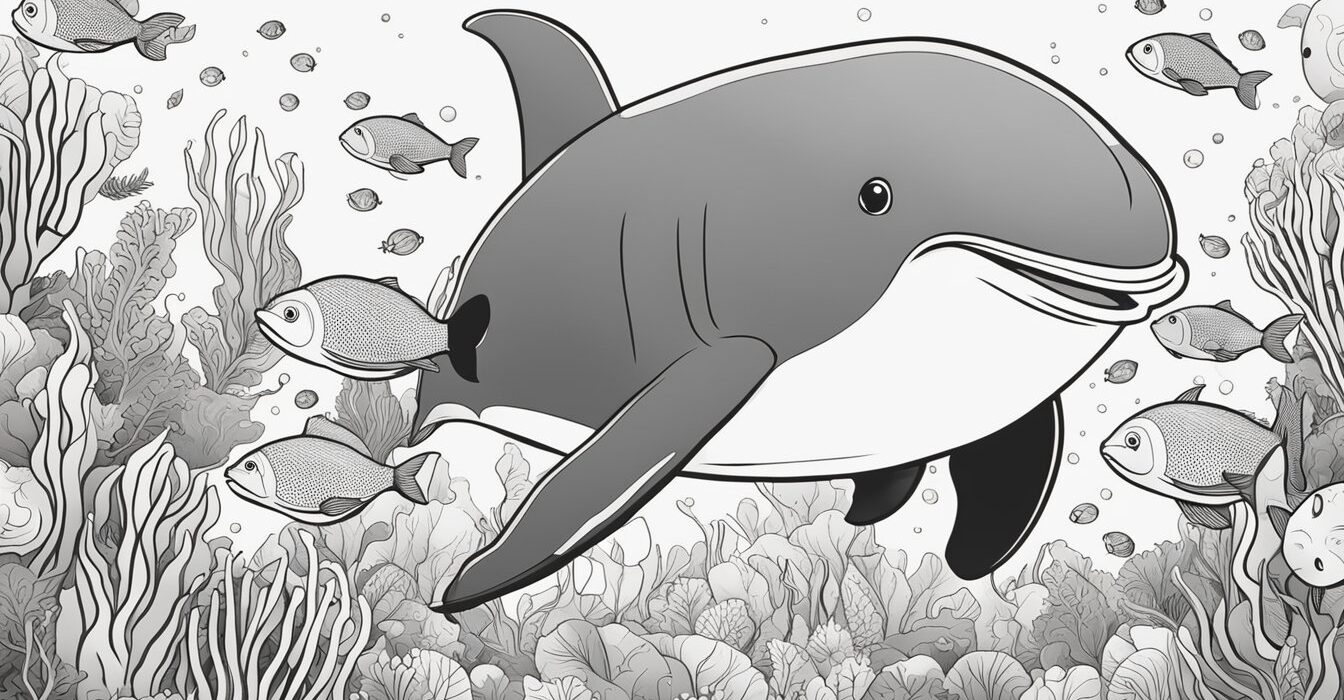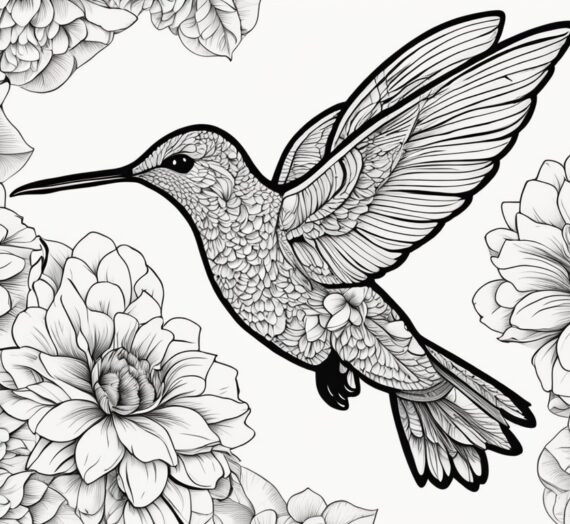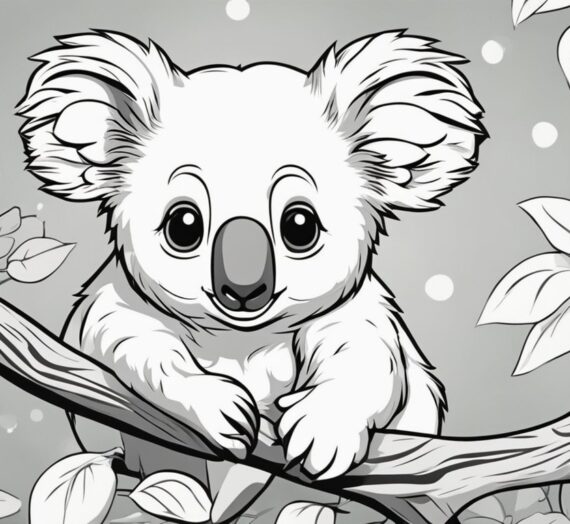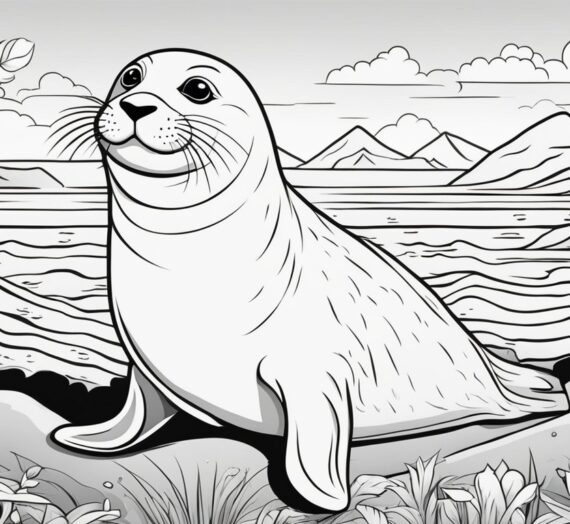Whale Coloring Page: Free Printable for Kids and Adults. Whale coloring pages are a fun and educational activity for children and adults alike. These pages feature various types of whales and their ocean friends, and they can be used to teach about whale characteristics, behaviors, and habitats. Coloring whale pages enhances fine motor skills, hand-eye coordination, and color recognition. It sparks curiosity about marine life, encouraging kids to explore and learn. Teens also can use coloring as a therapeutic outlet to relieve stress and anxiety. It also provides a platform to delve into marine biology topics and oceanography.
Whale Coloring Page
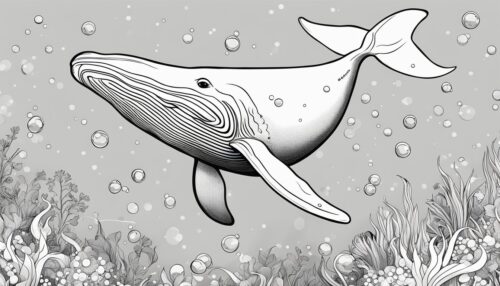
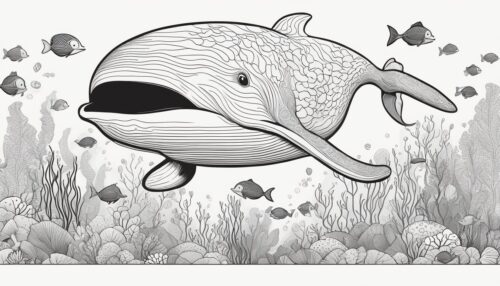
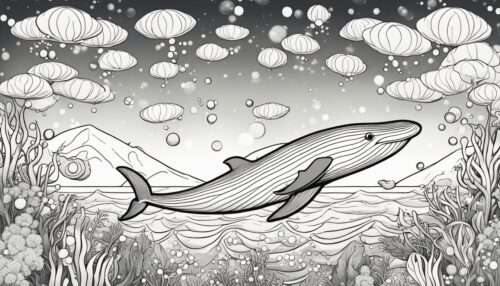
There are many different types of whale coloring pages available online, from free printable pages to more detailed coloring books. These pages can be used in a variety of settings, including classrooms, homeschooling, and family activities. They can also be used as part of a larger unit on marine life or oceanography, helping to reinforce key concepts and ideas. Whether you are a teacher, parent, or simply someone who loves whales, coloring pages are a great way to learn more about these fascinating creatures.
Types of Whale Coloring Pages
Humpback Whale Pages
Humpback whales are known for their long pectoral fins and the intricate patterns on their tails. These whales are often depicted in coloring pages breaching out of the water or singing their beautiful songs. Humpback whale coloring pages can be found in a variety of styles, from realistic to cartoonish.
Orca (Killer Whale) Pages
Orcas, also known as killer whales, are apex predators of the ocean. They are highly intelligent and social animals that can be found in every ocean of the world. Orca coloring pages often show these animals swimming in pods or hunting their prey. Some pages may also depict the different color variations of orcas, such as the classic black and white or the rare all-white orca.
Blue Whale Pages
Blue whales are the largest animals on Earth, reaching lengths of up to 100 feet. These gentle giants are filter feeders, consuming thousands of pounds of krill each day. Blue whale coloring pages often show these massive creatures swimming in the open ocean or with their young calves.
Beluga Whale Pages
Beluga whales, also known as white whales, are easily recognizable by their white, rounded heads. These social animals are found in Arctic and sub-Arctic waters. Beluga whale coloring pages often depict these animals swimming in icy waters or playing with their young calves.
Sperm Whale Pages
Sperm whales are the largest toothed whales and are known for their unique square-shaped heads. These deep-diving whales can hold their breath for up to 90 minutes and can dive to depths of over 7,000 feet. Sperm whale coloring pages often show these animals diving deep into the ocean or with their young calves.
In conclusion, coloring pages featuring different types of whales can be a fun and educational activity for children and adults alike. With the variety of styles and designs available, there is sure to be a whale coloring page that will capture the imagination of any ocean lover.
Educational Benefits of Whale Coloring Pages
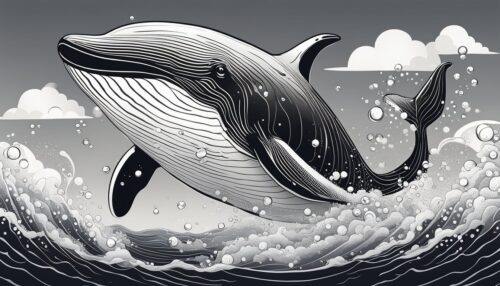
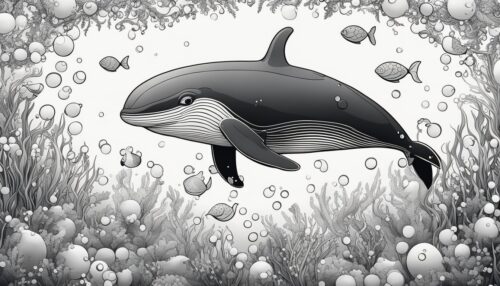
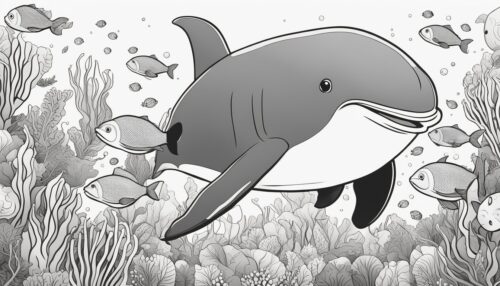
Whale coloring pages offer various educational benefits to children. Here are some of the benefits that can be gained from coloring whale pictures.
Cognitive Development
Coloring whale pictures can help children develop their cognitive skills. By coloring intricate designs, children can improve their focus and attention to detail. They can also learn about the different parts of a whale, such as the flukes, dorsal fin, and blowhole, which can enhance their knowledge of marine biology.
Fine Motor Skills Enhancement
Coloring whale pictures can also help children improve their fine motor skills. Holding and manipulating crayons or colored pencils can enhance their hand-eye coordination and dexterity. Coloring within the lines of a picture can also improve their precision and control.
Color Recognition and Vocabulary
Coloring whale pictures can help children recognize and distinguish between different colors. By labeling the colors they use, children can also expand their vocabulary and learn new words. For example, they can learn that the color blue is associated with the ocean, which is the natural habitat of whales.
In conclusion, coloring whale pictures can offer various educational benefits to children. They can enhance their cognitive development, fine motor skills, and color recognition and vocabulary. By providing children with whale coloring pages, parents and educators can encourage them to learn while having fun.
Selecting the Right Coloring Materials
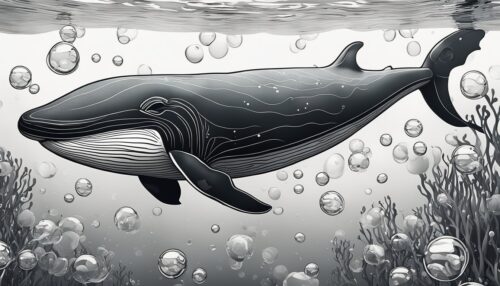
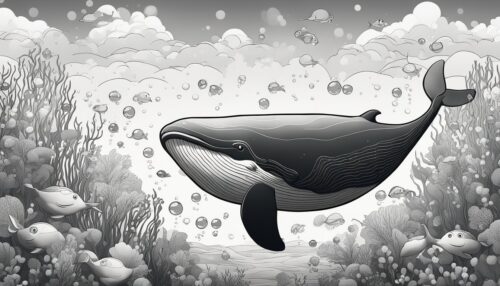
When it comes to coloring a whale coloring page, selecting the right coloring materials is crucial to achieving the desired result. There are a variety of coloring materials available, each with its own unique qualities and characteristics. In this section, we will explore the different coloring materials and help you choose the best one for your needs.
Crayons vs. Markers
Crayons and markers are two of the most popular coloring materials, and each has its own advantages and disadvantages. Crayons are great for younger children as they are easy to grip and control. They also come in a wide range of colors and are relatively inexpensive. However, crayons can be difficult to blend and may leave a waxy residue on the paper.
Markers, on the other hand, are great for older children and adults as they offer more control and precision. They come in a wide range of colors and can be blended to create unique shades. However, markers can be expensive and may bleed through the paper if not used properly.
Watercolors
Watercolors are a great option for those who want to achieve a more subtle and nuanced coloring effect. They are easy to blend and can create beautiful gradients and textures. Watercolors are also great for creating a more realistic look, as they can mimic the look of water and the ocean.
However, watercolors can be difficult to control and may require more skill and practice to use effectively. They also require special paper and brushes, which can be expensive.
Colored Pencils
Colored pencils are a great option for those who want to achieve a more detailed and precise coloring effect. They are easy to control and can create fine lines and intricate details. Colored pencils are also great for creating a more realistic look, as they can mimic the texture of whale skin and the ocean.
However, colored pencils can be expensive and may require more time and patience to achieve the desired effect. They also require sharpening, which can be time-consuming.
In conclusion, selecting the right coloring materials is crucial to achieving the desired result when coloring a whale coloring page. Crayons and markers are great for younger children, while watercolors and colored pencils are better suited for older children and adults. Each coloring material has its own unique qualities and characteristics, so it’s important to choose the one that best suits your needs and preferences.
Sources for Whale Coloring Pages
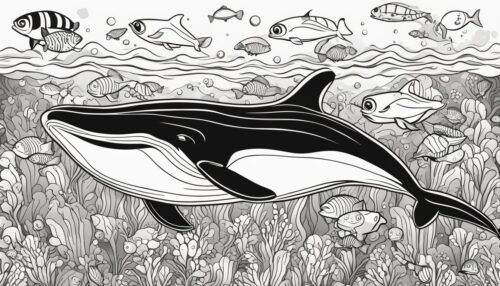
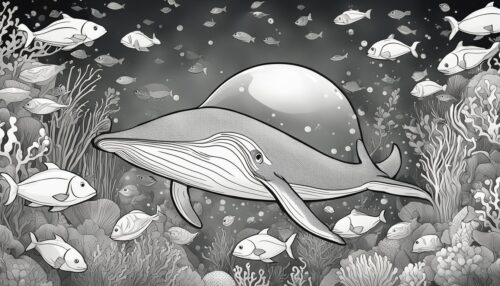
Whale coloring pages are a great way for children to learn about these magnificent creatures while having fun. There are many resources available for parents and teachers to find whale coloring pages, including printable online resources, coloring books, and educational websites.
Printable Online Resources
Printable online resources are a convenient and cost-effective way to find whale coloring pages. Websites such as ColoringPagesOnly.com and FreeColoringPages.org offer a wide selection of whale coloring pages that can be easily downloaded and printed at home. These websites also offer other sea creatures and ocean-themed coloring pages that can be used to create a complete educational experience.
Coloring Books
Coloring books are another great resource for finding whale coloring pages. Many bookstores and online retailers offer coloring books that feature whales and other sea creatures. These coloring books often include educational information about whales and their habitat, making them a valuable resource for parents and teachers.
Educational Websites
Educational websites such as NationalGeographic.com and NOAA.gov offer a wealth of information about whales and other marine life. These websites also offer free educational resources, including coloring pages and activity sheets, that can be used to supplement classroom lessons or homeschool curricula.
In conclusion, there are many sources available for finding whale coloring pages. Printable online resources, coloring books, and educational websites are all great options for parents and teachers looking to provide children with a fun and educational activity.
Creative Ideas for Coloring
Blending Techniques
Blending techniques can add depth and dimension to your whale coloring pages. Try blending different shades of blue to create a realistic ocean background. You can also blend white and gray to create a textured look on the whale’s skin. Use a blending tool or your fingers to gently blend the colors together for a seamless finish.
Background Decoration
Adding background decoration can enhance the look of your whale coloring pages. Draw seaweed, coral, and other sea creatures to create a more immersive ocean scene. You can also use stencils or stamps to add patterns and designs to the background. Experiment with different colors and shapes to create a unique and visually appealing backdrop.
Adding Textures
Adding textures to your whale coloring pages can make them look more realistic and interesting. Use a dry brush or sponge to create a mottled effect on the whale’s skin. You can also use a fine-tip marker to add details such as barnacles, scars, and wrinkles. Experiment with different textures and techniques to create a unique and visually appealing look.
By using these creative ideas for coloring, you can take your whale coloring pages to the next level. Whether you’re a beginner or an experienced colorist, these techniques can help you create a unique and visually appealing masterpiece.
Conservation Messaging in Coloring Pages
Threats to Whale Populations
Whales are majestic creatures that play a vital role in the marine ecosystem. Unfortunately, their populations are threatened by various human activities such as hunting, pollution, and climate change. Coloring pages can be used to educate children and adults alike about the threats faced by whales and the importance of protecting them.
Importance of Whales to Ecosystems
Whales are apex predators that help to maintain the balance of the marine ecosystem. They feed on smaller animals such as krill and plankton, which in turn helps to regulate the populations of these organisms. Additionally, whale waste provides nutrients for other marine organisms, and their carcasses provide food for scavengers. Coloring pages can be used to highlight the importance of whales to the marine ecosystem and the need to protect them.
How Coloring Can Raise Awareness
Coloring pages can be a fun and engaging way to raise awareness about conservation issues. By coloring pictures of whales and learning about their habitats and behaviors, children and adults can become more aware of the threats faced by these animals and the importance of protecting them. Coloring pages can also be used to promote positive behaviors such as reducing plastic waste and supporting sustainable fishing practices.
In conclusion, coloring pages can be a powerful tool for raising awareness about conservation issues and promoting positive behaviors. By educating children and adults about the threats faced by whales and the importance of protecting them, we can help to ensure the long-term survival of these magnificent creatures.
Organizing a Whale Coloring Activity
Whale coloring activities can be an excellent way to engage children in learning about these majestic creatures while also fostering their creativity. Here are some ideas for organizing a successful whale coloring activity.
Group Coloring Sessions
Group coloring sessions can be a fun and engaging way to get children interested in whale coloring pages. These sessions can be organized in schools, libraries, community centers, or even at home. To make the session more engaging, organizers can provide a variety of coloring materials such as crayons, markers, and colored pencils.
During the session, organizers can encourage children to share their ideas and techniques with each other. This can help children learn from each other and develop their creativity. Additionally, organizers can provide interesting facts about whales to keep children engaged and to help them learn more about these amazing creatures.
Coloring Competition
Organizing a coloring competition can be an excellent way to motivate children to participate in the activity. The competition can be organized in schools, libraries, or community centers. To make the competition more engaging, organizers can provide a variety of coloring materials and a range of whale coloring pages to choose from.
To ensure fairness, organizers can group children by age or grade level. Additionally, organizers can provide prizes for the winners to motivate children to participate.
Exhibiting Finished Work
Exhibiting finished work can be a great way to showcase the creativity of children and to encourage them to continue participating in the activity. Exhibitions can be organized in schools, libraries, or community centers.
To make the exhibition more engaging, organizers can provide interesting facts about whales and the coloring activity. Additionally, organizers can invite parents and guardians to attend the exhibition to show their support for the children.
In conclusion, organizing a whale coloring activity can be an excellent way to engage children in learning about these amazing creatures while also fostering their creativity. By organizing group coloring sessions, coloring competitions, and exhibitions, organizers can create a fun and engaging environment for children to learn and create.
Tips for Parents and Educators
When it comes to using whale coloring pages as an educational tool, there are a few tips that parents and educators should keep in mind. Here are some helpful suggestions to make the most out of these coloring pages:
1. Use Them as a Fun Learning Activity
Whale coloring pages can be a fun and engaging way to teach children about these majestic creatures. Parents and educators can use these coloring pages as a learning activity to teach children about whale anatomy, behavior, and habitat. By coloring in the different parts of the whale, children can learn about the different body parts and their functions.
2. Encourage Creativity
While coloring in the whale coloring pages, encourage children to use their creativity and imagination. Encourage them to use different colors and patterns to make the whale coloring pages unique and interesting. This can help children develop their creativity and artistic skills.
3. Supplement Learning Materials
Whale coloring pages can be a great supplement to learning materials such as books, videos, and documentaries. Parents and educators can use these coloring pages as a visual aid to help children understand the concepts they are learning about. For example, if children are learning about the different types of whales, parents and educators can use the coloring pages to help children identify the different whale species.
4. Use Them for Relaxation
Coloring can be a great way to help children relax and unwind. Parents and educators can use whale coloring pages as a tool to help children calm down and focus. Coloring can help children develop their fine motor skills and improve their concentration.
By following these tips, parents and educators can make the most out of whale coloring pages as a fun and educational tool for children.
Integrating Coloring Pages with Lesson Plans
Coloring pages can be a valuable addition to any lesson plan. They provide a fun and engaging way for students to reinforce their learning and express their creativity. Here are some ways to integrate coloring pages into lesson plans:
1. Use Coloring Pages as a Warm-Up Activity
Coloring pages can be a great way to start a lesson. They help students get into a relaxed and focused state of mind, which can be especially helpful for subjects that require concentration. For example, a science teacher might use a whale coloring page as a warm-up activity before a lesson on marine life.
2. Use Coloring Pages to Reinforce Learning
Coloring pages can also be used to reinforce learning. For example, a social studies teacher might use a coloring page of a map to help students learn the geography of a particular region. A math teacher might use a coloring page of a geometric shape to help students understand its properties.
3. Use Coloring Pages to Encourage Creativity
Coloring pages can also be used to encourage creativity. For example, an art teacher might use a whale coloring page as a starting point for a lesson on drawing sea creatures. Students can use the coloring page as a reference and then add their own creative touches to make their drawings unique.
In conclusion, coloring pages can be a valuable tool for teachers to use in their lesson plans. They can help students relax and focus, reinforce learning, and encourage creativity. By integrating coloring pages into their lesson plans, teachers can make learning more engaging and enjoyable for their students.
